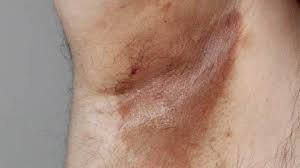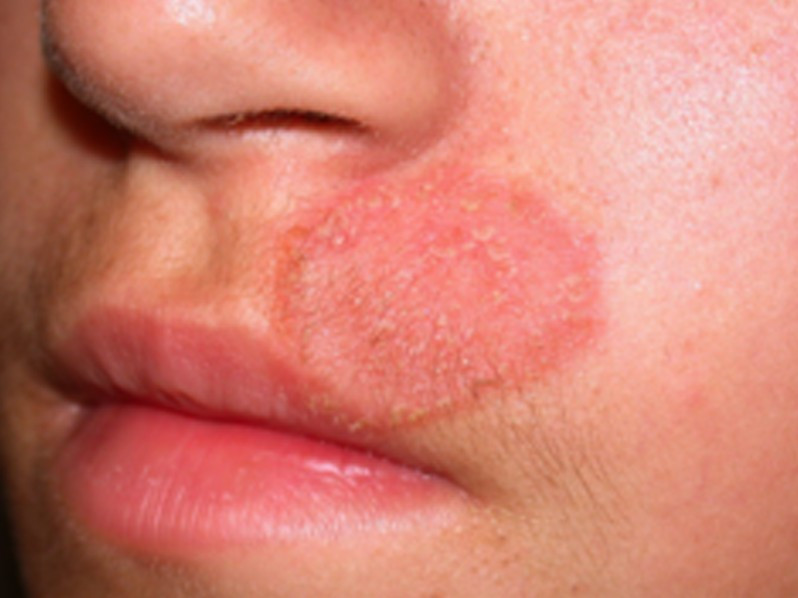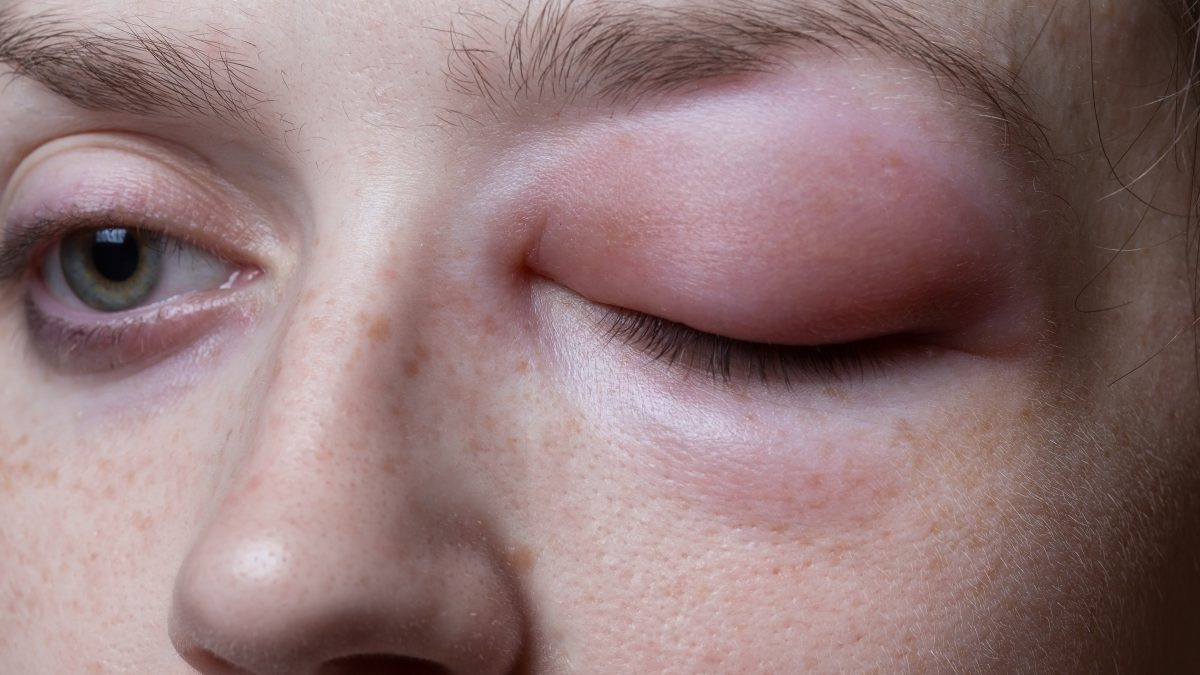Definition
Erythrasma is a bacterial infection that results in red or brown patches on the skin. It typically occurs in areas where the skin folds and is more prevalent in regions with warm or humid temperatures. Erythrasma is mostly caused by Corynebacterium minutissimum and typically progresses into a persistent or chronic skin condition.
Causes
Erythrasma is caused by a bacteria called Corynebacterium minutissimum. This bacteria typically inhabits the skin and thrives in warm and humid environments. Erythrasma is commonly located in skin creases. This bacteria can cause severe signs of erythrasma in individuals with immune disorders.
Risk factor
Erythrasma can affect anyone. Risk factors that can increase the likelihood of getting erythrasma include the following:
- Males
- Erythrasma can impact individuals of any age; however, it is more prevalent in older adults.
- Diabetes
- A compromised immune system
- Have other skin conditions
- Obesity
- Reside in a communal living arrangement, either at home with other individuals or at a dormitory
- Live in a warm or humid climate
- Excessive sweating
- Lack of hygiene
Symptoms
Erythrasma often manifests as subtly discomforting pink, red, or brown scaly patches on the skin. At times, the affected area might display a creased texture and may even progress to develop moist lesions. Over time, these patches evolve into a characteristic brown and scaly appearance, their size fluctuating, initially presenting with a pink or reddish hue.
Lesions typically manifest in skin creases but are more prevalent in the groin, interdigital spaces, or axillae. Cracked and scaly skin may be present if the condition is located between the toes. Erythrasma may manifest in the skin creases beneath the breasts, around the navel, or buttocks.
Most individuals with erythrasma are asymptomatic. Some individuals have pruritus and a burning sensation in skin rashes, particularly when there is an infection in the groin. Erythrasma symptoms can also arise over some time, ranging from months to years.
Based on the specific location of the skin condition on the body, there are three categories of erythrasma:
1. Interdigital Erythrasma
This erythrasma occurs on the feet, typically in the gaps between the toes (interdigital spaces). The rashes can occasionally occur together with other fungal or bacterial infections.
2. Intertriginous erythrasma
Intertriginous erythrasma occurs in skin folds or creases with contact and friction between the skin. Erythrasma primarily affects individuals with type 2 diabetes. Erythrasma typically presents with rashes in areas such as the armpits, groin creases, breast folds, buttock creases, or skin folds in the belly and thighs. This infection can occur within the creases of surplus adipose tissue on the abdomen or legs with sores.
3. Generalized Erythrasma
Generalized erythrasma manifests as skin patches distributed throughout the body. This form of erythrasma is rare. Women residing in warmer or humid tropical regions are more susceptible to developing this type of erythrasma.
Diagnosis
Similar symptoms are present in erythrasma and other cutaneous diseases. The doctor could do multiple tests to eliminate other possible diagnoses. Erythrasma can resemble other skin conditions such as tinea versicolor, psoriasis, candidiasis, seborrheic dermatitis (characterized by white scales and a reddish appearance on the scalp or some areas of the face), and pityriasis rotunda (dark patches that look scaly and uniform).
The doctor will inquire about your current medical history, symptoms, and concerns and do a physical examination to diagnose the disease. Under some circumstances, the doctor may do multiple diagnostic tests to help them confirm the diagnosis.
Then, the doctor can do the following diagnostic tests:
1. Wood's lamp
The Wood's lamp examination does not harm skin tissue; it involves utilizing a lamp that emits ultraviolet light on the skin. Erythrasma presents with skin rashes that exhibit coral-red fluorescence when exposed to a wood lamp. Different bacteria or fungi may occasionally be present under the light, leading to inaccurate positive results. If the result is a false positive, the doctor will conduct additional tests to confirm the diagnosis.
2. Potassium Hydroxide Test
This test is also known as the KOH prep test. The doctor will scrape a small portion of your skin and analyze the sample. The doctor will administer potassium hydroxide to the skin sample and examine it with a microscope. The doctor will determine whether the infection is caused by bacteria or fungus.
3. Skin Biopsy
Doctors could conduct a biopsy by extracting a tiny skin sample to be analyzed further in the laboratory. The procedure is seldom performed and is typically sought only when other tests fail to yield definitive results or when the disease does not respond to adequate treatment.
Management
The treatment for erythrasma varies based on the severity of the condition. The doctor typically initiates treatment by prescribing antibiotic cream or ointment to treat the lesions caused by bacterial infections. If the infection is severe, the doctor may prescribe oral antibiotics.
The treatment often requires two to four weeks to take effect. Treating the root cause of a condition, such as in patients with erythrasma and diabetes, can alleviate symptoms and promote faster healing.
The doctor could recommend basic therapies to help treat your skin, such as:
1. Practice good hygiene
Maintain good hygiene. Maintain cleanliness and dryness in the afflicted area. You can cleanse your skin with regular or antimicrobial soap containing aluminum chloride or chlorhexidine.
2. Wear comfortable clothes that absorb sweat
Wear light, loose-fitting cotton clothing if you live in a hot, humid climate. This approach could help to eliminate perspiration from your body. Attempt to remain in a cool or shaded area. Maintain a cool temperature in your house.
3. Powder
Apply baby or talc powder to constantly damp regions, such as the groin, armpits, or other larger skin folds.
4. Eat nutritious food
Diabetes significantly contributes to the development of erythrasma. Maintaining a balanced diet and restricting sugar intake are crucial. Erythrasma is a prevalent skin condition. Occasionally, it may recur after treatment. If there are any questionable changes in your skin, make sure to consult a doctor.
Complications
Erythrasma rarely leads to complications. Complications typically occur in those with compromised immune systems. Erythrasma can be severe in certain instances. Possible complications include:
- Cellulitis is a bacterial infection that results in redness and swelling of the skin
- Septicemia is a severe infection that spreads via the bloodstream
- Development of an abscess or purulent cavity
Prevention
To prevent erythrasma, you can take several measures.
- Maintain dry and clean skin
- Ensure thorough drying of your skin after showering
- Minimize excessive sweating if feasible
- Ensure your shoes are dry before putting them on
- Wear clean and dry attire
- Avoid locations with high temperatures or humidity
- Address primary conditions like diabetes
- Use antibacterial soap to avoid future recurrence
When to see a doctor?
Seek advice from a dermatologist if you exhibit the signs of erythrasma described above. Accurate diagnosis and appropriate treatment can help prevent symptom progression and complications from developing.
Looking for more information about other diseases, Click here!
- dr Hanifa Rahma
Bandoim, L. (2018). What is erythrasma?. Retrieved 23 March 2022, from https://www.healthline.com/health/erythrasma
What is erythrasma?. (2021). Retrieved 23 March 2022, from https://www.webmd.com/skin-problems-and-treatments/what-is-erythrasma
Kibbi, AG. (2020). Erythrasma. Retrieved 23 March 2022, from https://emedicine.medscape.com/article/1052532-overview
Erythrasma. (2020). Retrieved 23 March 2022, from https://medlineplus.gov/ency/article/001470.htm
Groves, JB., Nassereddin, A., Freeman, AM. (2021). Erythrasma. Retrieved 23 March 2022, from https://www.ncbi.nlm.nih.gov/books/NBK513352/
Brannon, HL. (2021). Overview of erythrasma skin infection. Retrieved 23 March 2022, from https://www.verywellhealth.com/what-is-the-erythrasma-skin-infection-1069432












